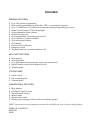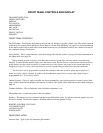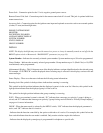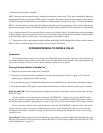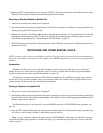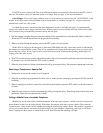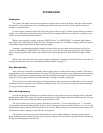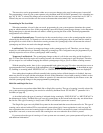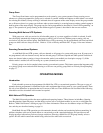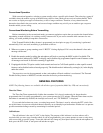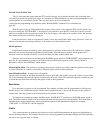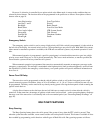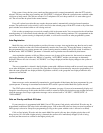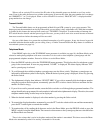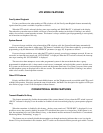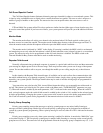Group Scan
The Group Scan feature can be programmed on each system by your system operator. Group scanning occurs
whenever a system programmed for group scan is selected or scanned with the microphone on-hook (there is no switch
for selecting this feature). Group scanning is indicated when all segments of the status display next to the group number
are on. However, there is no group scan indicator when system scanning is occurring because rotating symbols appear in
both locations of the status display. The group scan list can be programmed as described in “Scan List Programming” on
page 8. The operation of group scanning on the different types of systems is described in the next two sections.
Scanning Multi-Net and LTR Systems
With group scan, calls are received on all selectable groups of a system, regardless of which is selected. In addi-
tion, the display automatically changes to the group on which a call is received. Without group scanning, calls are
received on only the last-selected group. Each Multi-Net or LTR system may also be programmed with fixed and block
groups on which calls are always received. Refer to “Calls on Priority and Block IDs” on page 14 for more informa-
tion.
Scanning Conventional Systems
As with Multi-Net and LTR systems, calls are detected on all groups of a system with group scan. If group scan is
not programmed, calls are detected on only the last selected group. Call Guard squelch and other squelch control tech-
niques are detected when scanning as long as the monitor mode is not enabled (see description on page 11). If the
monitor mode is enabled, all calls occurring on a system (channel) are received.
Priority groups can also be sampled when scanning conventional systems. This feature ensures that important calls
on a priority group are not missed while listening to a call on a non-priority group. Refer to “Priority Group Sampling”
on page 17.
OPERATING MODES
Introduction
Each selectable system can be programmed for Multi-Net, LTR, or conventional operation. The type or types of
operation that are programmed is determined by the radio equipment that is being used by your system operator. There
are only a few differences in operation that are of concern to the user. These differences are described in the following
information and also elsewhere in this manual as required.
Multi-Net and LTR Operation
The Multi-Net mode provides the most sophisticated operating features. These features include Busy Queuing,
Auto-Registration, Status Messages, and the ability to place calls to individual mobiles in your site or some other site.
Refer to “Multi-Net Features” starting on page 13 for more information. There are also features unique to LTR opera-
tion, and they are described starting on page 16.
Both Multi-Net and LTR operations provide automatic channel selection and monitoring before transmitting. In
addition, telephone calls can be placed almost as conveniently as with a standard telephone, and special tones and
display messages indicate busy and out-of-range conditions. Selecting a Multi-Net or LTR group actually selects a
specific ID code which controls the mobile being called and also what calls are received.



